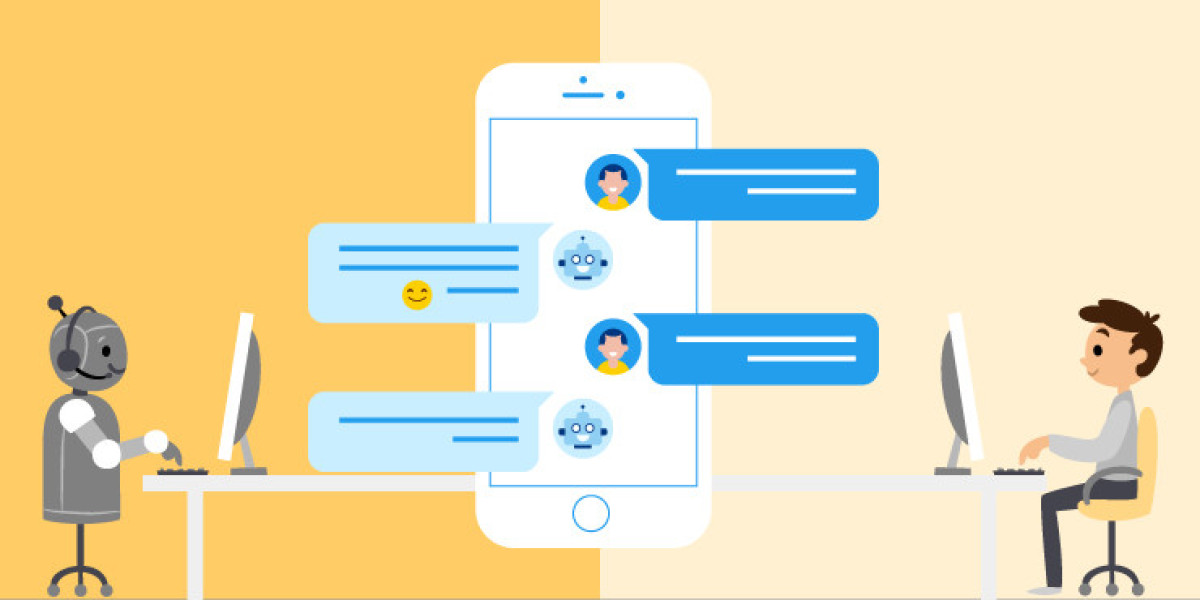Customer experience has become the central focus for brands in every industry. Whether it is banking, retail, telecom, healthcare, travel, or insurance, customers today expect quick, convenient, and highly personalized interactions. The old idea of waiting on hold, pressing multiple keypad options, and repeating queries to different support agents no longer works. Modern customers want real-time resolution, conversational interaction, and seamless self-service capabilities.
This shift has created a significant transformation in how companies handle inbound and outbound communication. Two primary systems often compared are Traditional Interactive Voice Response (IVR) systems and AI Voice Bot solutions. Although both handle voice-based customer interactions, the difference between them is substantial. Traditional IVR relies on predefined menu navigation, while AI Voice Bots use natural language understanding, machine learning, and intelligent decision-making to deliver human-like conversations at scale.
This blog explores the real difference between AI Voice Bot solutions and Traditional IVRs, supported by industry use cases, architectural insights, and business impact analysis.
Understanding Traditional IVR Systems
IVR systems have been around for decades. They were originally designed to automate the routing of incoming calls to the right department, reduce load on call agents, and provide pre-recorded information without human involvement.
How IVR Works
Traditional IVR systems function through keypad and menu-based navigation. Callers follow an automated voice menu.
Typical flow:
A caller dials the support number.
They hear a recorded greeting.
The system presents numbered menu options.
The caller presses keys to navigate.
The IVR forwards the call or provides recorded information.
Key Features of Traditional IVR
Predefined menu-driven interactions.
Basic DTMF tone recognition (keypad inputs).
Ability to provide pre-recorded responses.
Routing calls to live agents based on selections.
Limitations of IVR
Traditional IVR systems work well for simple, repetitive tasks but fall short when handling complex or conversational requests.
Common customer frustration points:
Long and complicated menu paths.
Difficulty in finding the correct option.
Inability to explain issues naturally.
Repetitive steps if redirected to a live agent.
Lack of personalization.
The result is often high call abandonment rates, increased frustration, and poor brand experience.
As customer expectations evolve, IVR alone is no longer sufficient.
What Are AI Voice Bot Solutions?
AI Voice Bots leverage artificial intelligence, speech recognition, natural language processing, and intent detection to enable natural, two-way conversational interactions. Instead of pressing keys, customers simply speak naturally, and the system understands and responds intelligently.
How AI Voice Bots Work
AI Voice Bots go beyond pre-recorded scripts. They:
Listen to spoken language.
Convert voice to text using speech recognition.
Detect the speaker’s intent using NLP and ML.
Retrieve or process relevant information.
Respond with natural language and structured logic.
Unlike IVRs, AI Voice Bots do not require the user to adjust their language or follow strict input sequences. The system adapts to the caller.
Core Technologies Behind AI Voice Bots
Automatic Speech Recognition (ASR)
Natural Language Understanding (NLU)
Machine Learning Behavioral Models
Dialogue Management Systems
Text to Speech (TTS) Engines
Integration APIs with CRMs, ERPs, and internal databases
Capabilities of AI Voice Bots
Understand imprecise or casual language.
Maintain contextual memory.
Personalize conversations in real time.
Perform transactions, not just provide answers.
Learn continuously from interactions.
AI Voice Bots turn customer communication into dynamic, interactive, and efficient experiences.
Key Differences Between AI Voice Bots and Traditional IVR
| Criteria | Traditional IVR | AI Voice Bot Solutions |
|---|---|---|
| Interaction Style | Menu and keypad based | Conversational and natural language based |
| Customer Experience | Linear and structured | Adaptive, contextual, and dynamic |
| Personalization | Limited to account lookup | Personalized responses based on user behavior and preferences |
| Ability to Handle Complex Queries | Very limited | High, including multi-step logical processing |
| Learning Ability | Fixed logic, no learning | Continuously improves through interactions |
| Scalability | Scales with call routing | Scales with automated intelligence across scenarios |
| Integration | Often siloed | Deep integration across business systems |
Why AI Voice Bots Deliver Better Customer Experience
Modern call experiences must feel intuitive, helpful, and human-friendly. AI Voice Bots support this by:
1. Conversational Flow Instead of Menu Navigation
Customers speak freely:
“I want to check my order status”
“I need to reset my password”
“Can you update my mailing address?”
No need to remember or explore menu hierarchies.
2. Hyper Personalization
AI Voice Bots can:
Recognize returning customers
Access purchase and support history
Suggest solutions proactively
This helps conversations feel natural and human-like.
3. Faster Resolution
AI Voice Bots eliminate repetitive steps and handle the entire interaction independently. This reduces:
Call duration
Queue times
Human agent workload
4. 24/7 Intelligent Availability
AI Voice Bots operate continuously without breaks or downtime. This ensures every customer receives a timely response.
Use Cases Where AI Voice Bots Outperform Traditional IVR
Banking
Balance inquiries
Transaction tracking
Card blocking
Loan application support
Healthcare
Appointment scheduling
Prescription renewals
Patient pre-screening
Medical information delivery
Retail and E-Commerce
Order status updates
Return request handling
Payment issue resolution
Telecom
Plan upgrades
Device troubleshooting
Network outage updates
Travel and Hospitality
Ticket booking
Flight updates
Loyalty membership inquiries
AI Voice Bots can handle both support and transactional tasks.
Impact on Customer Support Teams and Business Operations
Reduced Agent Workload
AI Voice Bots handle repetitive inquiries that consume up to 70 percent of support time. Human agents are free to focus on complex and relationship-based tasks.
Reduced Operational Costs
By reducing the dependence on large call centers and minimizing call transfers, organizations achieve significant cost efficiency.
Scalable Customer Engagement
Voice bots can handle thousands of concurrent calls without performance degradation.
Higher Customer Satisfaction
Shorter wait times, smooth conversations, and personalized responses lead to higher satisfaction and loyalty.
When Should Businesses Move From IVR to AI Voice Bots?
Consider an upgrade if:
Customers frequently complain about difficulty navigating menus.
Support wait times are consistently high.
Call center costs are rising.
Customer queries require contextual understanding.
The organization wants to enable self-service transactions.
AI Voice Bots are especially valuable when customer experience is a brand priority.
Can IVR and AI Voice Bots Work Together?
Yes. Many organizations adopt a hybrid approach where:
IVR handles basic routing.
AI Voice Bots manage intelligent self-service interactions.
Live agents resolve critical or emotion-sensitive cases.
This blended model maximizes efficiency, reduces friction, and ensures quality customer care.
Future of Voice-Based Customer Communication
The rise of voice AI marks a major shift in customer engagement. Trends shaping the future include:
Emotional recognition for tone-based understanding.
Integration with digital channels for seamless omnichannel support.
Predictive voice assistance that anticipates customer needs.
AI Voice Bots are evolving from reactive support tools to proactive conversational partners.
Conclusion
The real difference between Traditional IVR and AI Voice Bot solutions centers on adaptability, personalization, and intelligence. While IVRs follow rigid menus and often leave customers frustrated, AI Voice Bots create a conversational, intuitive, and efficient experience. They understand natural language, personalize interactions, resolve complex queries, and continuously improve based on user behavior.
Businesses that adopt AI Voice Bots gain operational efficiency, improved customer satisfaction, better scalability, and stronger competitive positioning. In contrast, companies relying solely on traditional IVR systems risk outdated support flows, high abandonment rates, and customer dissatisfaction.
The shift from menu-driven call automation to intelligent conversational engagement represents more than a technology upgrade. It is a transformation in how businesses communicate, serve, and build relationships with their customers.
The future of customer experience is voice driven, automated, personalized, and intelligent. AI Voice Bot solutions are no longer optional. They are becoming an essential pillar of modern customer support strategy.








